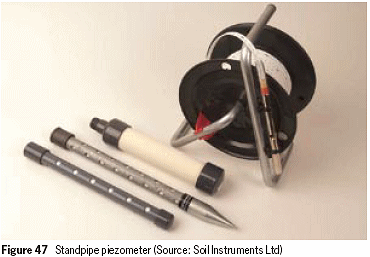Buy the Book
Published By Lankelma
Lankelma is the foremost contractor for onshore in-situ soil testing in the UK. An acknowledged
specialist in CPT, Lankelma also offers a worldwide consultancy and training service.
A.P. van den Berg develops, designs and manufactures geotechnical and environmental soil
investigation equipment for onshore and offshore applications. Specialists in CPT systems and equipment.
Gardline
Gardline Geosciences offers worldwide marine geotechnics, in-house consutancy and services with marine
investigations ranging from nearshore to full ocean depth (down to 3000m).
About the Author
Hans Brouwer studied civil engineering at Delft University in The Netherlands. He has
worked as a part-time lecturer at Amsterdam Polytechnic and was senior partner in a structural
engineering consultancy. He has written a standard textbook in Dutch about the design of
building foundations. He now lives in England where he writes technical textbooks in
English, hopefully to reach a bigger readership.
Quick Links:
Chapter 6
Instrumentation
Standpipe piezometer
STANDPIPE PIEZOMETER 6.1 |
| |

The standpipe piezometer is used to monitor piezometric water levels.
It consists of a filter tip joined to a riser pipe. Readings are obtained
with a water level indicator.
Standpipe piezometers are simple, reliable and relatively inexpensive.
The accuracy depends on the skill of an operator. They can be very slow
to respond to changes in porewater pressure since large fluid volumes
are required to change the level in the standpipe. It is not usually
possible to monitor these instruments remotely.
Applications
Typical applications are for monitoring:
- porewater pressures to evaluate slope stability
- ground improvement techniques (eg vertical drains, sand drains, and
dynamic compaction)
- dewatering schemes for excavations and underground openings
- pore pressures to check the performance of earth-fill dams and
embankments
- pore pressures to check containment systems at landfills and tailings
dams
- water drawdown during pumping tests.
Installation
The standpipe piezometer, which is either installed in a borehole or
pushed into position using CPT equipment, consists of a filter tip joined
to a riser pipe. In a borehole the filter tip is placed in a sand zone and a
bentonite seal is placed above the sand to isolate the porewater
pressure at the tip. The annular space between the riser pipe and the
borehole is backfilled to the surface with a bentonite grout. This is to
prevent unwanted vertical migration of water.
Where the push-in method is used there is usually no need to backfill
around the riser pipe with bentonite grout. The riser pipe is terminated
above ground level with a vented cap.
Operation
Water levels in the standpipe piezometer are measured with a water
level indicator. The water level indicator consists of a probe, a
graduated cable or tape, and a cable reel with built-in electronics. The
probe is lowered down the standpipe until it makes contact with water.
This is signalled by a light and a buzzer built into the cable reel. The
depth-to-water reading is taken from the cable or tape. The water level
indicator features a sensitivity adjustment which helps the user obtain
consistent measurements and eliminates false triggering.
|
<< Previous PageNext Page >>